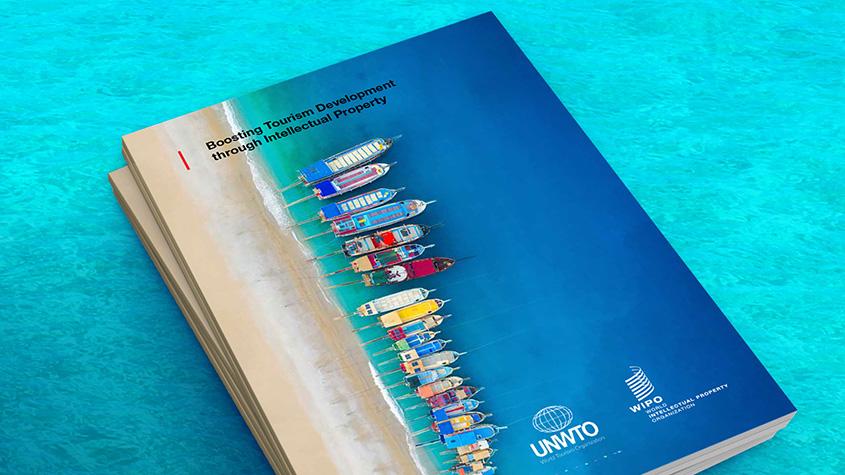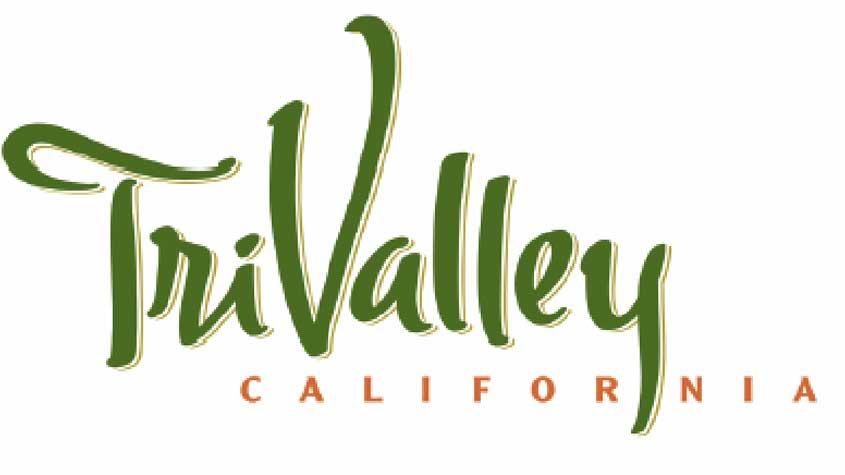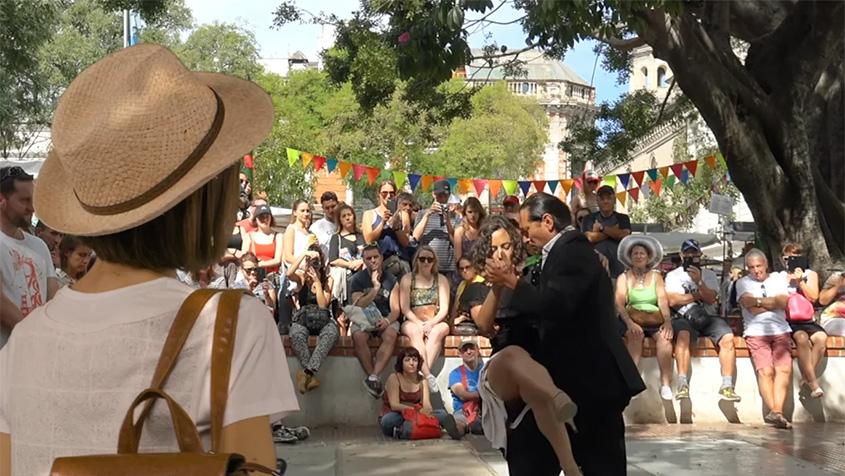Intellectual Property and Tourism
Do you own a hotel or restaurant or run a car rental company or travel agency? Do you work for a museum, organize cultural festivals or supply services and goods for tourists? If you are involved in the tourism sector in any way, then IP rights may be helpful for:
- creating a distinctive identity in the market
- protecting your competitive advantage
- promoting national culture and heritage or
- adding a revenue stream that would otherwise have not been possible.
Projects on IP and tourism

Boosting tourism development
PUBLICATION YEAR: 2021
A report published jointly by WIPO and the World Tourism Organization (UNWTO) shows how the IP system creates a favorable ecosystem for innovation, entrepreneurship and investment in the sector.
IP and gastronomic tourism
The project on IP and gastronomic tourism aims to promote the use of intellectual property in culinary traditions (food and beverages) for application in the tourism sector.
Creating a distinctive identity
Creating a distinctive presence in the market is not only of interest to individual businesses. Cities, regions and even countries may rely on the IP system to create a unique identity.
Brands
“Destination branding” is an example of efforts by cities or regions to create a distinctive appeal that will resonate amongst visitors and they have done so by relying on a trademark, whether by virtue of a registered logo or tagline.

St. Moritz – Top of the World
The Swiss mountain resort St Moritz was one of the first to register the name “St Moritz” and the tag line “Top of the World”, not only in Switzerland but also in the Office of Harmonization for the Internal Market, the Trademark Office of the European Community.

Kerala – Gods Own Country
Similarly “Kerala – Gods Own Country” has been registered as a trademark in India.

Tri-valley California
Tri-valley California trademark is owned by the Tri-Valley Visitor and Convention Bureau representing the region which comprises three adjacent valleys.

I love NY
“I love NY” has succeeded in capturing the hearts and minds of millions who see New York through this logo as a vivacious, lively and dynamic city with something for all.
Certificate trademarks
In the tourism industry small businesses can acquire a certain distinctiveness and visibility through the application of certification marks. There are a number of profit or not for profit authorities that lend their logos to enterprises in the tourism sector, certifying that they have complied with such criteria as are important for tourists. The Green Globe Certification, a global “eco-tourism label” that promotes sustainable tourism, is one such example.
Collective marks
Another way in which small businesses have gained in visibility and reputation is collective marks. “Logis” is a registered mark of the Fédération Internationale des Logis, which is an association of independent hoteliers bound together with the objective of promoting privately owned hotels in a rural setting grouped under the same label.
Other IP rights
For creating a distinctive identity, other IP rights can also be useful. Tourism companies can look at design rights and copyright to protect their logos. Design rights, though traditionally used to protect the shape and form of industrial goods, have – through their applicability to two dimensional products such as textiles – made them useful also for protecting logos. Similarly, given that a logo is often a work of artistic creation, copyright may also be usefully relied upon for protecting logos.
Geographical indications can support the growth of tourism in agricultural rural (non-urban) areas. They may fall under an umbrella brand applicable to a whole region or they may be an independent, stand-alone destination brand. Earliest and best examples of such tourism are built around the wine industry.
For example, around Bordeaux wine a number of industries have arisen to cater to wine lovers who can now enjoy tours to see how wine is produced, stay in wineries, engage in wine tasting, participate in wine festivals, or simply enjoy walking and biking around vineyards. Similarly the Barossa region in south Australia has leveraged the geographical indication of Barossa made famous by the wines produced in that region to make its region an attractive destination for tourists interested in wine, food and the joie de vivre that goes with it.
Protecting competitive advantage
Having created a distinctive identity that makes it identifiable to its customers – an essential prerequisite for product loyalty – companies need to protect and secure that identity from imitators and free riders. In this context, IP rights are powerful tool that can be used to boost tourism development and competitiveness.
What is it that makes a company competitive? It may be a particular way of doing business, the type of customers, the customer preferences that it caters to, the suppliers, the pricing systems, discount systems, plans and strategies, research data – all information that allows a business to compete more effectively, and if your IP assets are exploited by competitors, this advantage would be lost.
For example, booking and reservations systems and other such solutions through information technology may be protected by trade secrets, copyright or patents, or a combination of these rights, depending on the national law of the country.
Similarly, promotional materials, guidebooks, leaflets, advertisements etc. are protectable under copyright. Their unauthorized use by others could cause harm to the reputation and image of the company.
Further, many of these different rights and copyright in particular would become relevant in the context of websites which companies in the tourism sector would be relying on.
Promoting national culture and heritage
Many countries and destinations see local culture and heritage, including local arts and handicrafts, indigenous music and recordings of local performers, locally produced food, etc., as an asset in developing their tourism sector.
Traditional cultural expressions and traditional knowledge in tourism have their potential as an asset that can serve as a foundation for the creation or development of tourism products and services. Different IP rights might be used to preserve and promote a valuable part of national, regional and/or local knowledge, traditions and cultural heritage.
Creating additional revenue streams
IP rights can be commercialized, which makes them particularly relevant to the tourism sector. They can be incorporated into the promotional or marketing strategy of any goods, services, activities, products or destinations.
For instance, a logo created and protected by a tourism destination is an IP right that is unique to that destination. The logo can be exclusively used by its owner in a promotional video campaign or it can be traded through a licensing agreement with third parties. These third parties might then use it for promotional giftware and souvenirs, such as cups and T-shirts, generating revenue for the tourism destination.
Licensing, franchising and merchandising in the tourism sector
The IP rights owner may, apart from using them to create brand recognition or protect competitive advantage, use these rights to create additional revenue streams by giving third parties the permission to use these rights against a fee. The licensing, franchising and merchandising are at the core of a substantial and growing practice in the tourism sector.
For instance, the trademark “St. Moritz – Top of the world” has been widely licensed to businesses, ensuring a steady and additional revenue stream to the St. Moritz tourism board. One of the licensees is “Fashion Box”, a clothing company, which carries St. Moritz as one of its brand labels for its clothing.
Hotels and restaurants are often franchised businesses. A leading name in the hotel industry, Hilton, is a franchised business. In other words, the Hilton in a particular location is owned by an independent entity who is entitled to use the trademark Hilton and all other relevant IP assets as well as the whole business model of running that hotel.
Most souvenirs that are available for purchase by tourists, whether it is models of the Eiffel tower, t-shirts with a particular slogan that is a registered trademark or mugs bearing Maori designs, have been produced under the merchandising scheme.

Find out more
- Role of IP in Enhancing the Competitiveness of the Tourism Industry (PDF)
- IP, Sports and Tourism: A Perfect Match

Making a Mark: An Introduction to Trademarks for Small and Medium-Sized Enterprises
PUBLICATION YEAR: 2017
